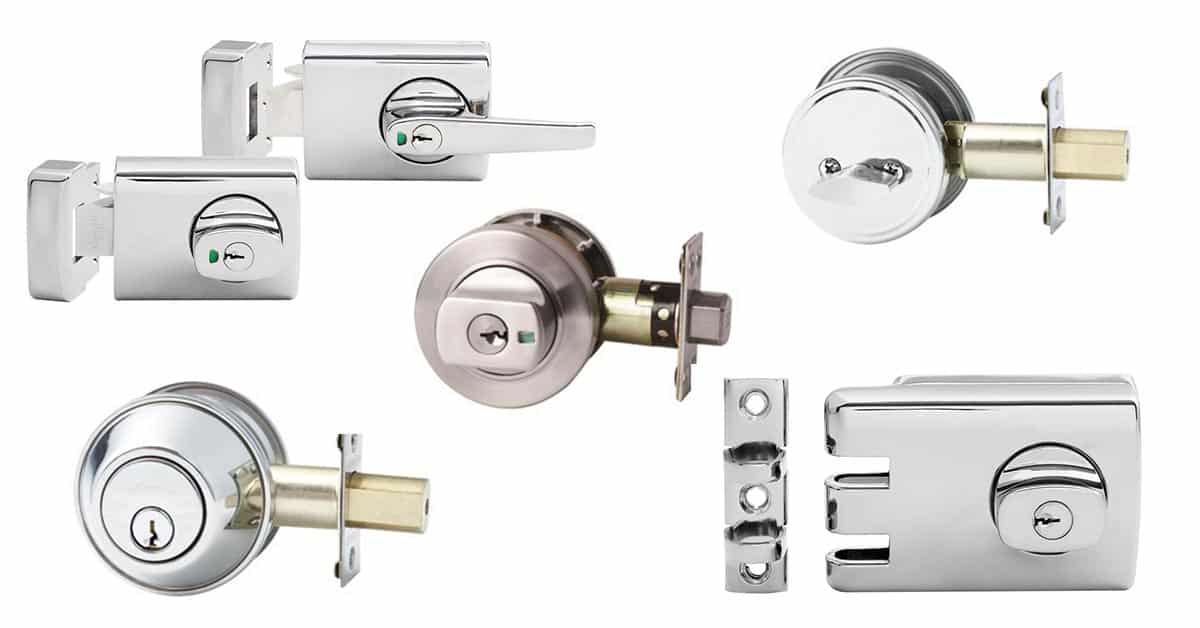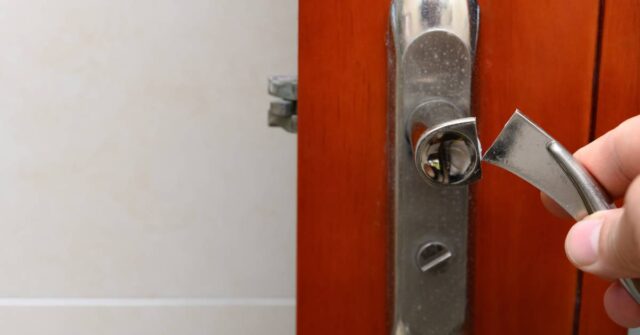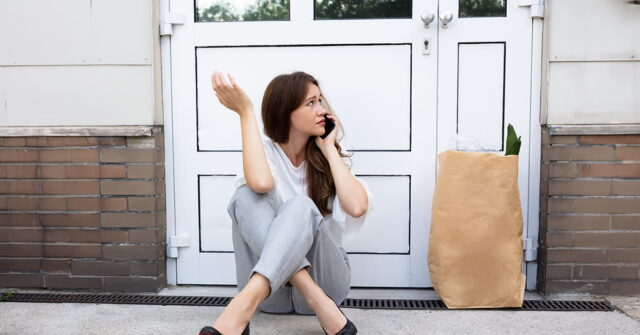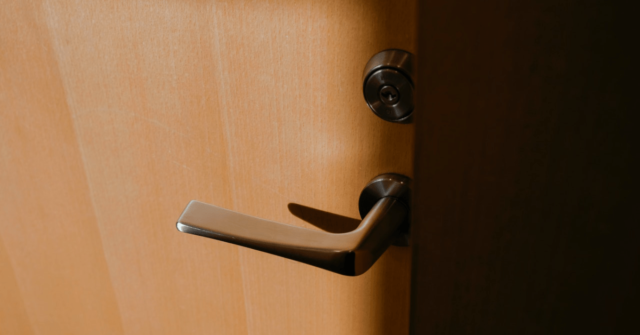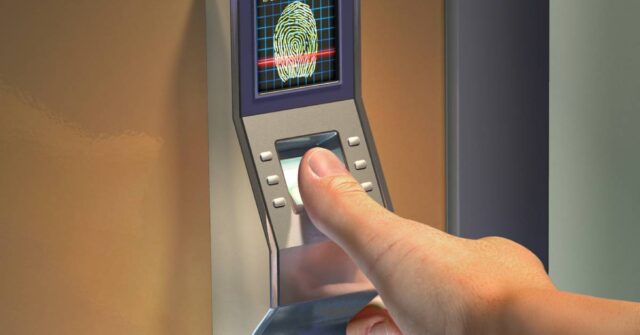When it comes to security, the term deadlock refers to a lock that requires a key to lock and unlock it.
This is different from a spring lock, on your bathroom door for example, which can be locked with a push button or mechanical switch.
Deadlocks are most commonly used on exterior entry points, such as the front door, and are characterized by just a keyhole on the outside of the door.
By inserting the right key and turning it you can unlock the deadlock and enter.
These special types of locks are also known for their strength and reliability. As such, it has become a very common way to secure homes and businesses.
In fact, most insurance companies insist that you have a deadlock installed as part of their policy requirements.
But what about deadbolts and deadlatches? Well, these two locks are also types of deadlocks, they just have differences that make them unique.
The easiest way to compare these three is to look at each one in more detail.
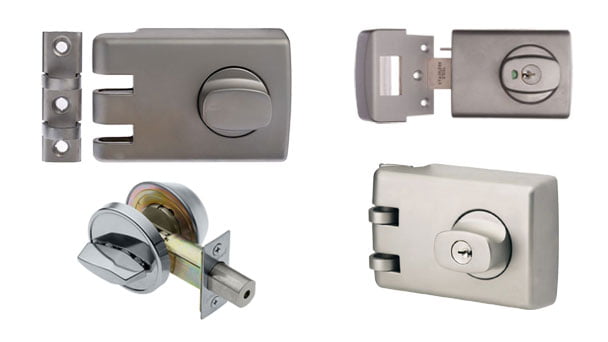
What is a Deadlock?
As mentioned above, a deadlock has a keyhole exposed on the exterior of the door. The rest of the lock is on the other side of the door (the interior), and these two parts connect through the door itself.
On the interior side of the door, the deadlock will have a knob. This knob may or may not have a keyhole, which results in two different types of deadlocks. Single-cylinder and double-cylinder.
Single-Cylinder Deadlocks
In this variation, the knob on the interior of the deadlock does not have a keyhole.
The reason for the interior knob is so you can open the lock, and thus exit from inside the property. Of course, the exterior always requires a key to open and close the lock, and thus gain entry.
Doube-Cylinder Deadlocks
With this variation, there are two cylinders and as such two keyholes. One keyhole on the exterior and one on the interior.
This allows more flexibility and security when compared to a single-cylinder deadlock.
Essentially double cylinder deadlocks introduce a deadlock mode. When the lock is deadlocked, turning the internal knob will not unlock the deadlock.
To exit deadlock mode you must insert the key in the internal or external keyhole and unlock the lock.
By using this deadlocked mode you can safeguard your house so that if an intruder breaks into your property through a window or another access point they will be unable to exit through a deadlocked door.
The risk with this is you can lock yourself or someone else inside unintentionally, so be cautious when using this mode of operation.
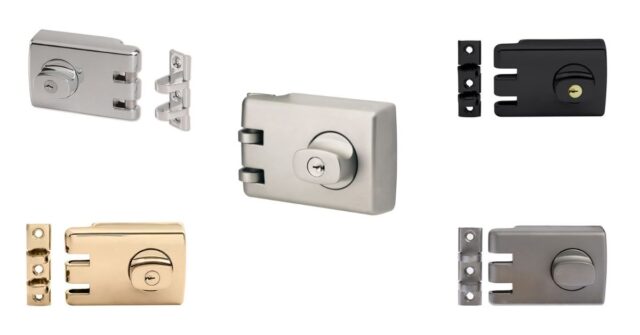
What is a Deadbolt?
A deadbolt is a special type of deadlock with a bolt that extends into a hole in the wall or floor. This makes it next to impossible to open the door forcefully when the deadbolt is in the extended position.
This is different from a traditional deadlock which includes a lock assembly and another piece of metallic hardware that secures the locking mechanism to the door frame.
Deadbolts also come in single and double-cylinder options.
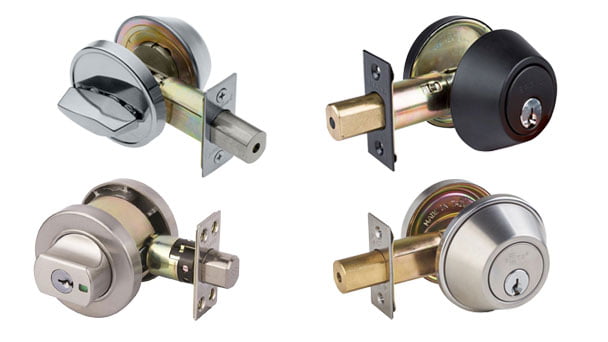
What is a Deadlatch?
A deadlatch combines the advantages of a deadlock with that of a latch.
Traditional deadlocks and deadbolts need to be locked with a key that extends or retracts the locking mechanism. However, a deadlatch allows the function of locking without a key as you close the door.
This is great as you can leave your house by turning the internal knob to open the lock and then the latch will allow the door to close and lock as your exit.
Deadlatches also come in single and double-cylinder options to allow even more functionality. Here are the three modes of operation with double-cylinder deadlatches.
- Passage Mode: The locking mechanism is permanently unlocked so the door can be freely opened and shut.
- Safety Mode: The knob on the inside of the door can open and close the lock. So, even though you need a key to enter from the exterior, you do not need a key to exit when in safe mode.
- Secure Mode: In this mode, the interior knob will not function without a key. The lock is in a deadlocked mode which requires a key to both enter or exit.
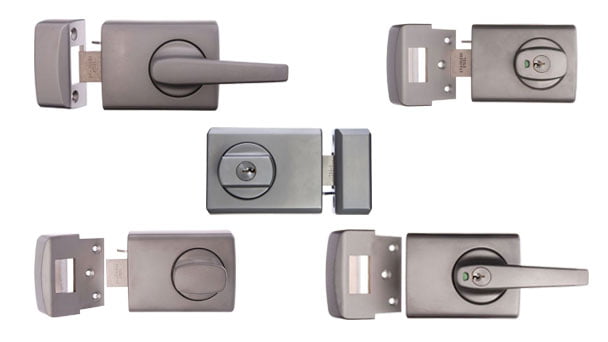
Why Insurance Companies Insist on Deadlocking Devices
Insurance companies love deadlocks, deadbolts, and deadlatches because it is harder for burglars to break through these locks, gain access to your home, and ultimately steal from you.
However, you must be careful when using Secure mode (if your lock has this function). For example, you can easily become locked in without any way of getting out.
Thankfully lock manufacturers have evolved their deadlocks, such as the popular Lockwood 001 Double Cylinder Deadlatch, to prevent users from locking themselves inside.
Time to Upgrade Your Home Security?
Does your front door have an up-to-date deadlock? If not, you may not be adequately protecting your family and property contents.
Fitting deadbolts, deadlocks, and deadlatches to your door helps keep burglars from entering your home and office.
What’s more, insurance companies usually stipulate that your property must be secured with a deadlock mechanism to be successfully insured.
As qualified and experienced locksmiths we install various types of deadlocks from leading brands such as Carbine, Lockwood or Whitco to residential and commercial properties within our QLD service areas.
Ensure the security of your home or office is not compromised due to inferior locks.

